Puerto Rican Spanish (5+ Learning Resources, 20+ Immersion Resources)
by Marissa Blaszko · March 29, 2021
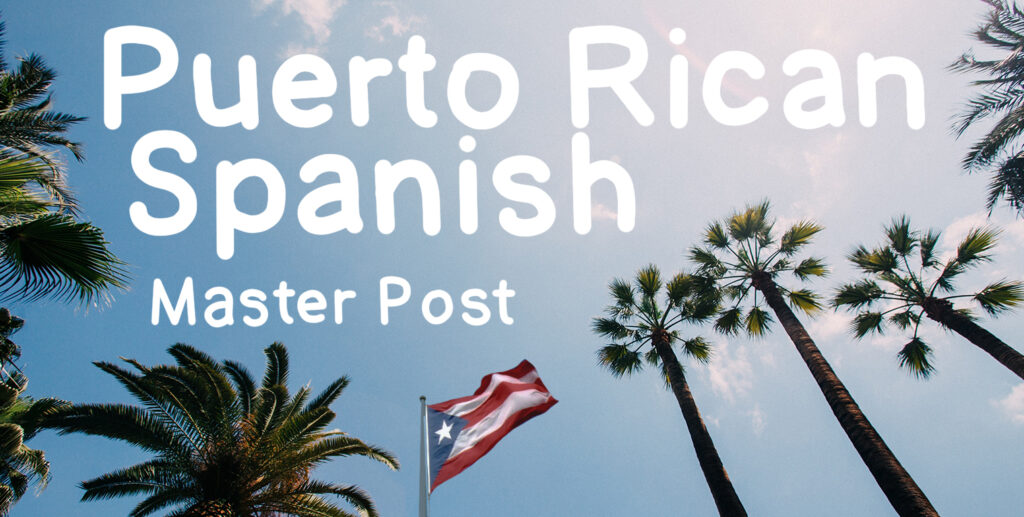
Despite Puerto Rican Spanish being one of the many home-grown Spanish dialects in the United States, there are fewer resources for language learners online than for almost any other Spanish dialect.
Puerto Rican Spanish isn’t “spanglish” and it isn’t “broken” (despite what some monolinguals might think.) It’s a rich reflection of the country’s history and culture, and a fantastic dialect for any curious language learner.
The goal of this article is to give you a quick understanding about Puerto Rican Spanish, as well as plenty of tools to help you master the dialect.
To best use this post as a learning tool, save this post into your bookmarks or on Pinterest and refer back to it as you move through your Puerto Rican Spanish learning journey.
This article is for Puerto Ricans and non-Puerto Ricans alike. No matter what your current level with Spanish or relationship with the island, you’ll leave here with plenty of takeaways!
And FYI, some (but not all) of the links on this page are affiliate, meaning I may make a small commission if you purchase a product I personally use and recommend to my friends.
1. Intro to Puerto Rican Spanish
2. Resources for Learning Puerto Rican Spanish
2a. Learning the Basics of Spanish
2b. Learning Puerto Rican-Specific Spanish
2c. The Puerto Rican Accent
2d. Finding Boricua Teachers & Exchanges
3. Boricua Immersion (At Home or Anywhere)
3a. YouTube, Podcasts, and Music
3b. Books, Short Stories, and Poetry
3c. Where to find real-life immersion
Intro to Puerto Rican Spanish
I went to Puerto Rico for the first time after years of living in Mexico, hanging out with Spaniard friends, and enjoying films and shows from South America.
I was already a fluent Spanish speaker and used to working and living in the language.
So imagine my surprise when I landed on the island… and couldn’t understand a single Uber driver, waitress, or barista.
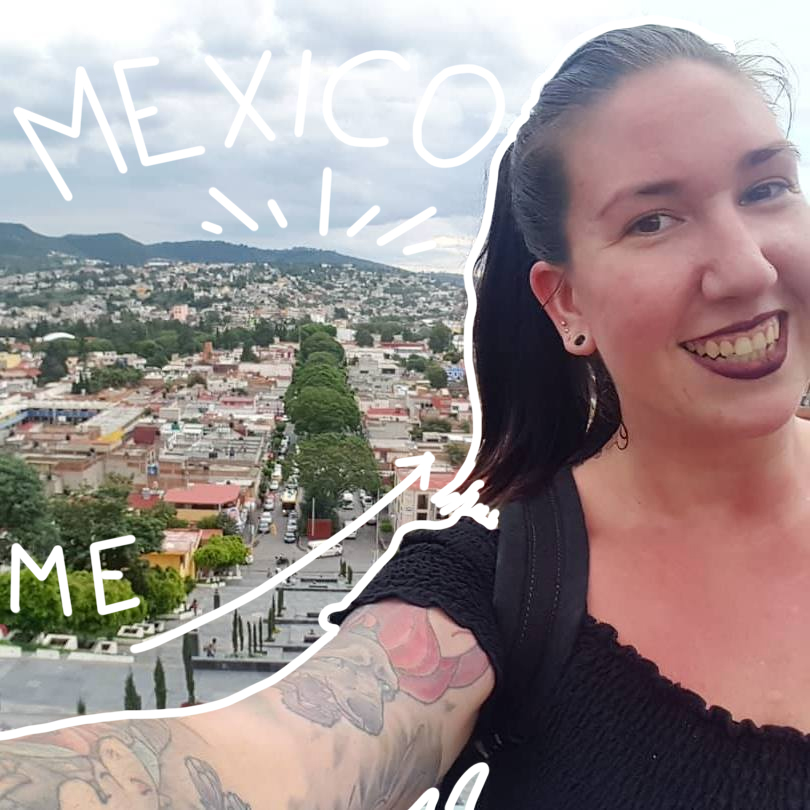
Puerto Rican Spanish is different than other dialects.
Its soft L’s, dropped final letters, and muted vowels make it probably the smoothest Spanish accent, but those sounds coupled with its hyper-specific vocabulary can make hard (if not near-impossible) for other Spanish speakers to understand.
So before we get into how to learn Puerto Rican Spanish, let’s look at what it is (and isn’t).
A Brief (Linguistic) History of Puerto Rico
Somewhere around 4,000 years ago, the first group of Puerto Ricans was believed to have come up into the Caribbean from Soth America. With plenty of root vegetables, tropical fruits, and fresh fish the population grew for a few thousand years, probably reaching around 30,000 – 60,000 at its peak.
The language the Taino people spoke isn’t well documented. So we don’t know much about its grammar or have any dictionaries for it.
But thanks to letters, diaries, and reports written by Spaniards who came into contact with it, we know a few dozen words we still use today were adopted into Spanish, English, and beyond from the local language.
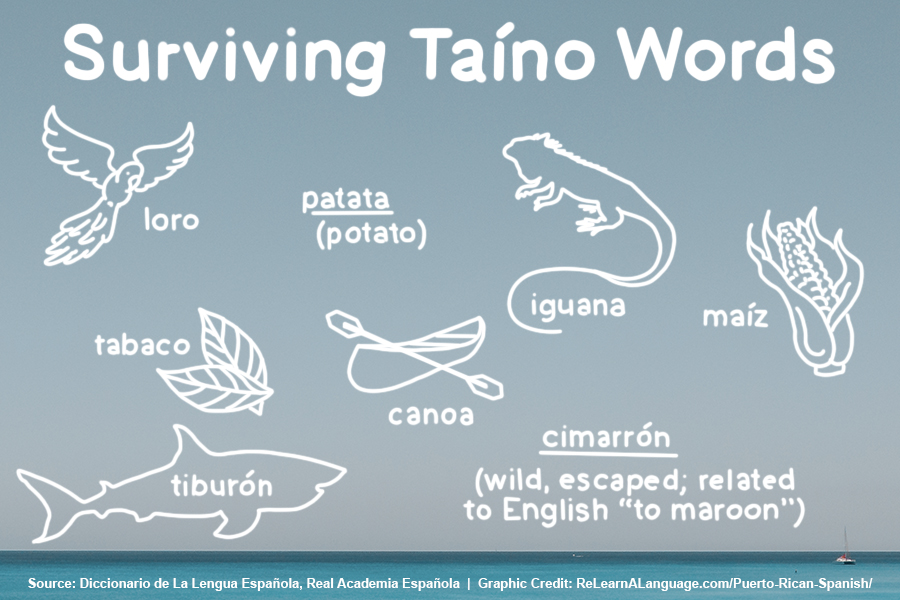
That’s because almost immediately after making contact with the Taínos, the Spaniards took over not only the island but the local language.
In the US today, we think of Spanish as a discriminated-against minoritized language, despite the US having the second-largest Spanish-speaking population in the world. [source]
But the Spanish conquistadors shattered the Taíno culture and language so completely that it’s only in these handfuls of surviving words that we know anything about the Taíno language at all.
1491
30,000 – 60,000 Taínos live on the island
👤👤👤👤👤👤
👤👤👤👤👤👤
👤👤👤👤👤👤
👤👤👤👤👤👤
👤👤👤👤👤👤
👤👤👤👤👤👤
👤👤👤👤👤👤
👤👤👤👤👤👤
👤👤👤👤👤👤
👤👤👤👤👤👤
1518
3,000-6,000 Taínos survive Spanish invasion
👤👤👤👤👤👤
It took 27 years for the Spaniards to wipe out 90% of the Boricua population by their own records.
The majority of deaths are attributed to mass murder and the smallpox pandemic. But the Spanish continue farther west into the Americas, and Puerto Rico becomes their port to the new world.
To keep the port running, sea captains and mercenaries begin trafficking in kidnapped Africans to repopulate the island.
With the new population come not only new bodies but new cultures. Much of the music and food Puerto Rico is celebrated for today come directly from the richness of West Africa in both taste and name.
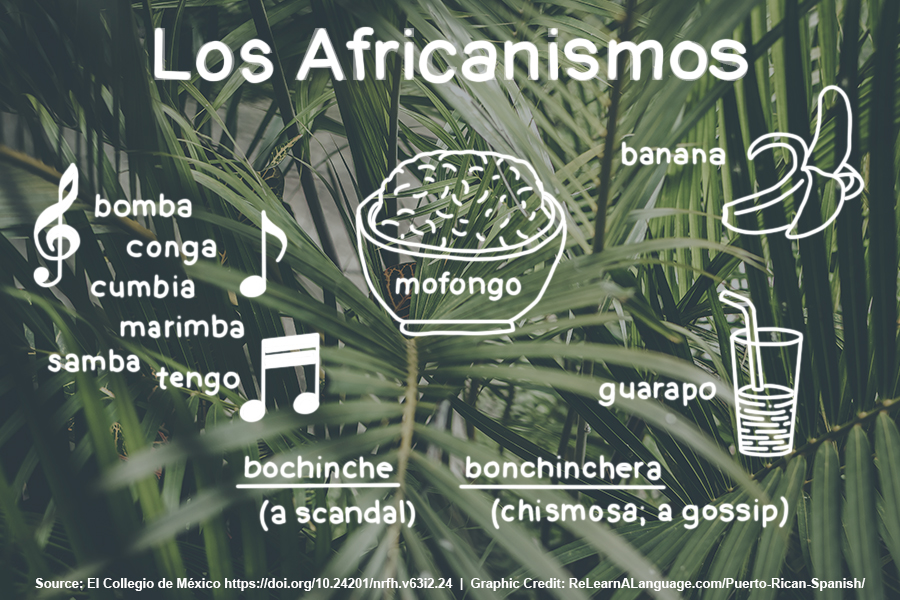
The local language, like the culture, reflects the reality of the port at the mouth of three words.
But as enslaved Africans and Indigenous people rebelled against European rule worldwide, the old empires began to crumble.
By 1811, Spain ends shackle slavery. And by the late 1890’s it loses the Spanish-American War–surrendering Puerto Rico, Guam, and the Philippines to the United States.
Initially, little changed: Puerto Ricans had no say in their government, no right to citizenship, and none of the same protections as anyone on the mainland. The colony continued to live in Spanish.
But beginning in 1917, three things happened:
- The Jones Act. In March 1917, as rebellions against empires reached new heights and WWI roared through Europe, the US extended citizenship for the first time to Puerto Rico. They could now freely travel and trade within US borders. But why now, after nearly 30 years as a colony?
- US Entry into WWI. By December, only a few months after extending citizenship, the US began drafting citizens to fight against other colonial powers in Europe. For the first time ever Spanish-speaking Puerto Ricans were in daily contact with mainland Americans in army barracks and trenches.
- The Radio. As was production wound down by the mid-1920s, factories began to turn out communication technology instead of weapons: namely, the radio. As Americans emerged victorious for the first time on the international playing field, Anglo entertainment made its debut.
And with those things, came some big language changes in Puerto Rico.
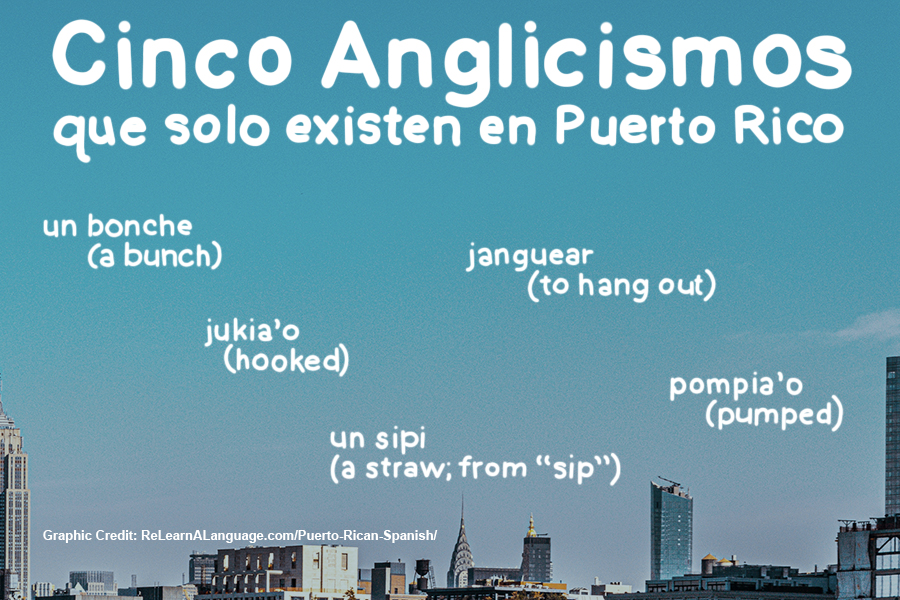
(A full list of Anglicisms in Puerto Rican Spanish would probably take up a PhD thesis. But those are some of my own favorites.)
At the end of the day, the best way to get to know Puerto Rico is through its language. Through it, you’ll not only find layers and layers of borrowed words and historic influence, but you’ll be able to access more writings, records, music, and food than you ever could in English.
So keep reading, and get excited for your deep dive into the language.
Want to learn more about the history of Puerto Rico? Here are the books I recommend:
- War Against All Puerto Ricans (available in Spanish as Guerra Contras Todos los Puertorriqueños)
- The Battle for Paradise (available in Spanish as La Batalla por el Paraiso)
- The Tainos: Rise and Decline of the People Who Greeted Columbus
A Tale of Two Dialects
Like we’ve said above, Puerto Rico’s history have tremendously influenced the language–from its indigenous and African roots to its modern English.
But as we continue into the future, the presence of English in almost every Puerto Rican’s life is changing the language faster in faster.
In fact, there are two distinct dialects of Puerto Rican Spanish.
Unfortunately, there haven’t been any linguistic studies that I know about, but we can always play linguist and study some of the evidence at hand. Let me point out a few differences from this video.
(Note: Eli doesn’t speak Spanish, but there are still a few things we can study here.)
- 0:13 – Listen to how Iván says the word “here today” and “the other day”. While his accent is almost undetectable, certain sounds (er, ay) are a bit more nasal than they are when Eli says those same words. (Also at 1:17 with “we’re”, “never”. Contrast it to Eli’s accent in between those two points.) Those differences in English accents will also likely exist when they’re speaking in Spanish.
- 2:15 – Eli talks about how earlier in his life, his connection to Puerto Rico was through his parents and grandparents. Just like the music has changed over the past decades, so has the language. Continent-born Puerto Ricans who are learning Spanish from the older generations are likely using words or slang that were popular in the 60s or 70s and not more contemporary slang. (Imagine how you would speak English if you were taught by someone from 70 years ago!)
Why is this important for what we’re learning here?
If you come from the continent and hear different words or patterns of speaking than you hear on the island, that doesn’t make those ways wrong! You’re simply hearing a linguistic variation, similar to how Puerto Rican Spanish is different than Mexican Spanish is different than Colombian Spanish.
Neither is wrong and neither is right, but as you begin to learn Spanish you can feel encouraged to adopt whichever variation you’re most comfortable with.
Spanglish (What it Is and Isn't)
“They don’t really speak Spanish! It’s just Spanglish.”
The co-existence of English and Spanish in nearly every corner of Boricua life has meant that many young Puerto Ricans are bilingual (and many are monolingual English speakers).
But do English-influenced words mean that Puerto Rican Spanish mean that it’s a worse Spanish than, say, the Spanish from Madrid?
Or that they’re not even speaking a real language–just a deformed, mashed-up version of two languages?
For decades in the United States, it was seen that way. Spanglish was an insult and a problem to be fixed–neither “proper English” nor “good Spanish”.
But over the past decades, Latinos and linguists have worked hard to educate the general public on what Spanglish actually is: an amazing demonstration of bilingualism.
Don’t believe me? Check out the video below (and if you’re not already bilingual, turn on the subtitles in either English or Spanish)
Spanglish exists to serve many purposes: to speak faster, to use a word unique to one of the languages, or even just because you like a certain filler word.
But even outside of everyday conversations, Spanglish is establishing its place in the creative world in works like the Pulitzer Prize-winning novel The Brief Wondrous Life of Oscar Wao or the songs of hugely celebrated rapper Bad Bunny.
But if Puerto Rican Spanish has such a heavy English influence, couldn’t a person from Spain consider it just a form of Spanglish?
Nope. Here’s why.
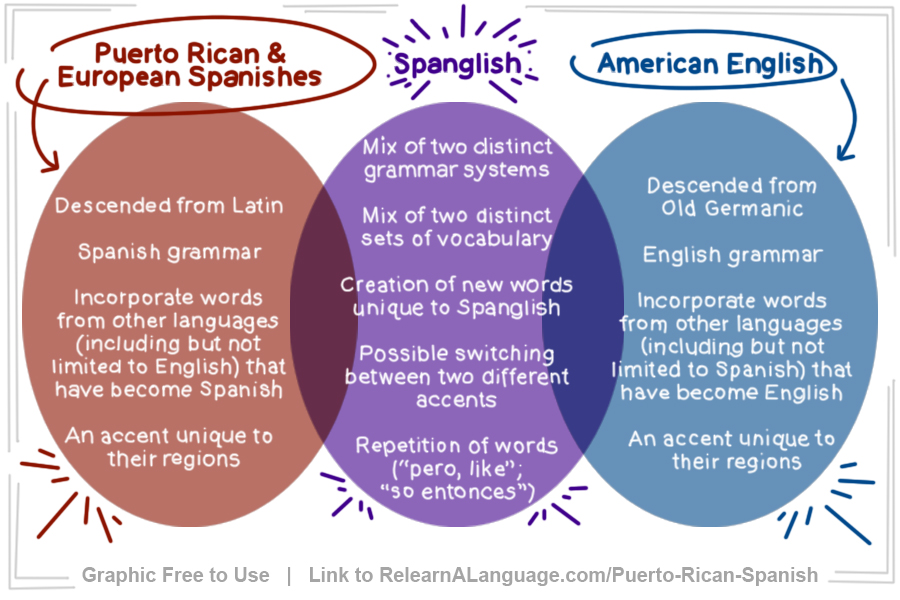
Languages have individual predictable patterns and structures, but when someone speaks Spanglish they borrow from two different patterns and structures.
Given enough time, Spanglish could fuse those different systems into one and become its own third language.
But for right now–Puerto Rican Spanish isn’t Spanglish. It’s a dialect of Spanish, just like the dialects from any country.
But even if it was Spanglish? No hay nothing wrong con un poquito de code-switching.
Resources for Learning Puerto Rican Spanish
Now, let’s figure out you’re starting point so you can begin learning Puerto Rican Spanish.
Maybe you’re not Puerto Rican (I’m not).
Maybe you are Puerto Rican (like many of my neighbors).
Either way, we need you through two phases: (1) learning the basics that all Spanish dialects have in common and (2) making sure your Spanish is as Puerto Rican as you want it to be.
The basic fact of it is that there are incredibly few Puerto Rican-specific resources online. So if you don’t already speak Spanish, you’ll need to start with some more generic resources.
If you already speak Spanish, you can skip to the Puerto Rican-specific part of this post.
But if you haven’t mastered Spanish yet, keep reading.
Learning Spanish Basics
Because Puerto Rican Spanish resources are mostly about the dialect itself (and not about how to learn it from zero), you’ll need to start here if you’re not already comfortable with a different dialect in Spanish.
Here are 3 resources you can bookmark and return to in order to help you learn Spanish (or improve your existing language).
Are you Puerto Rican… but don’t really speak the language?
Well, you’re not alone. Puerto Ricans have been historically disenfranchised from their language, culture, and identity. And reclaiming that as an adult is a completely badass decision.
Check out this heritage language FAQ to learn more about what will make you unique as a Spanish learner, and the Relearn A Language YouTube Channel if you want to feel a little less alone in your journey.
Want to improve your existing Spanish?
Check out our guide to advanced Spanish, perfect for the intermediate plateau and beyond.
Learning Spanish from zero?
Check out our massive massive massive guide for how to learn Spanish from scratch.
This guide will help you put together a roadmap for your journey into learning Spanish basics, as well as give you practical tips for incorporating a specific dialect.
But since this post is mostly about learning Puerto Rican Spanish, now we can dive into all of the dialect-specific tools out there!
Learning Puerto Rican-Specific Spanish
One of the big misconceptions about Puerto Rican Spanish is that the only thing different about it is “the slang”.
Sure, there are plenty of fantastically-local words and phrases (like you can see in the below videos).
But really, the differences are so fundamental that you’d be hard-pressed to navigate a restaurant menu in Puerto Rico without knowing the local language.
Here are a few of the resources Spanish speakers (or students) can buy to familiarize themselves with Puerto Rican Spanish.
The Puerto Rican Accent
When I was first learning Puerto Rican Spanish, one of the biggest things that set me apart from my east coast neighbors was how different our accents were.
But there was no information online.
In a desperate attempt to understand what I could do to make myself fit in a bit better, I hired and worked with an accent coach to start uncovering the Puerto Rican accent.
Everything in this section is original to this website, and will hopefully help you understand a bit more about what makes this Spanish variant so smooth and soft.
Vowel Sounds
The first (and arguably easiest) way to see what makes the Puerto Rican accent different is by comparing it to two different Mexican accents. I then added how I would say the same words while using my most-Gringa accent. (No, I don’t really talk like this.)
In this recording, I had friends say the same words to use the vowels A, E, I, O, and U.
Now: how can we really represent these differences so we can talk about them concretely?
With an IPA chart of course!
This handy invention creates a map of the insides of our mouths. Check out this example (below) and repeat these 4 words: see, tap, thought, goose.
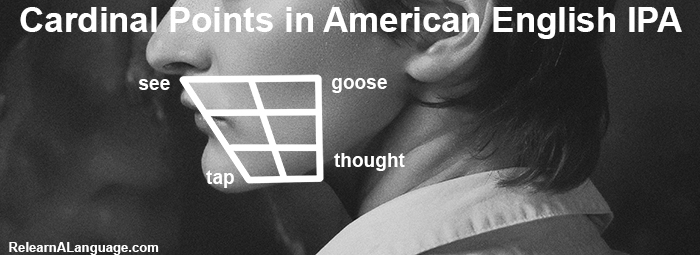
We call these the 4 “cardinal points” of English IPA–the further most points in your mouth. (If you say them in a circle first going counter-clockwise then clockwise, you’ll be able to read the map more easily.)
Now, the trick with mapping out Puerto Rican vowels (in contrast with the Mexican and American vowels) is to feel them in your mouth while speaking and plant them on the IPA map.
Here’s what I found between the two types of Spanish:
Listen with the recording and try to feel the difference between the Mexican and Puerto Rican accents in your mouth by repeating after the tape.
You can even record yourself to hone in your exact vowels.
(Credit to Puerto Rican Spanish 101 for some help on this!)
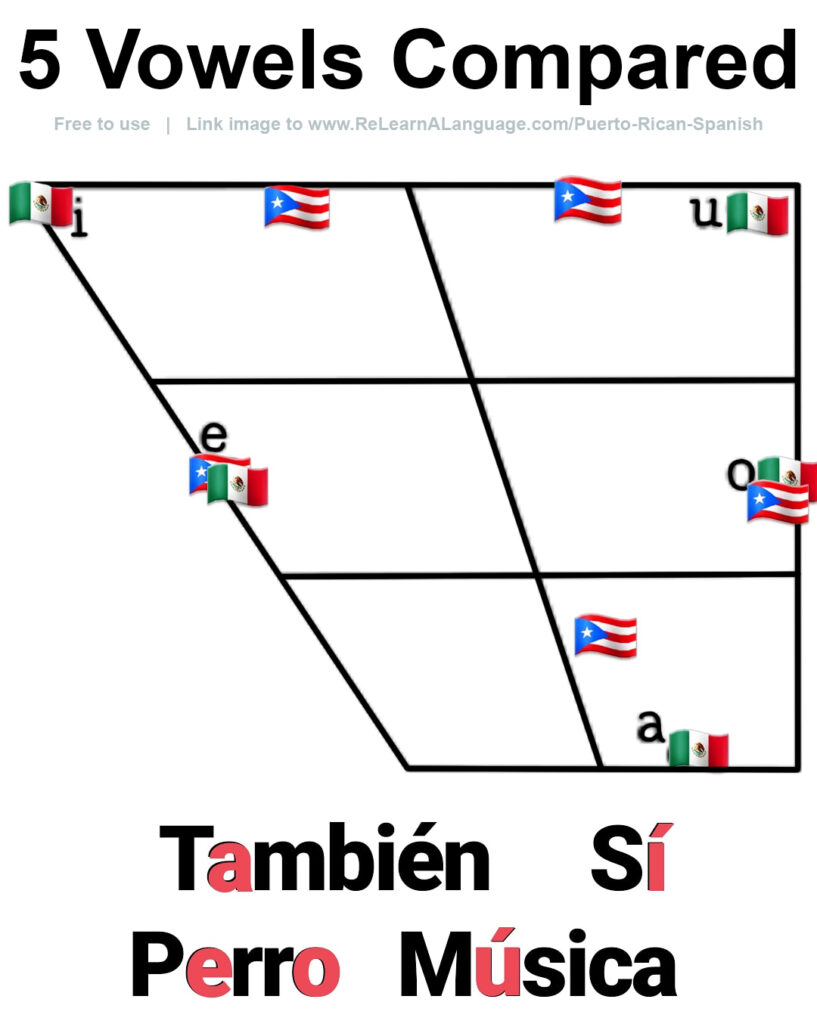
To make this map, I had native Spanish speakers in Mexico and Puerto Rico say the same 4 words, which together consisted of the 5 vowels found in Spanish.
I then did my best to imitate their accents to discover where they were placing their tongue in order to make the sound.
Then, I mapped!
(You can replicate this by listening to my recordings, pausing after every word, and mapping your own vowel quadrilateral.)
The most interesting thing was how much more centered Puerto Rican vowels were. My tongue was doing way less work than it was in my Mexican Spanish!
Next, we went through some possible diphthongs to see if that was true for other vowel sounds:
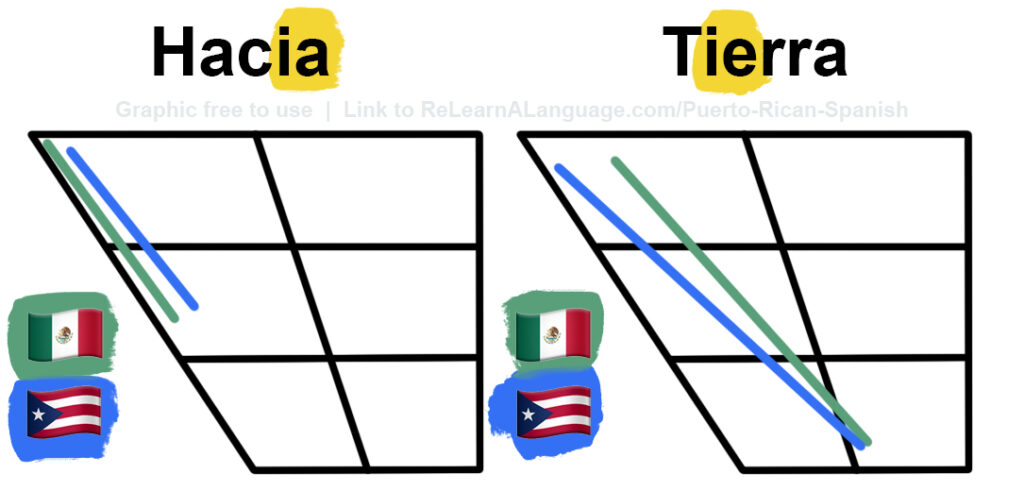
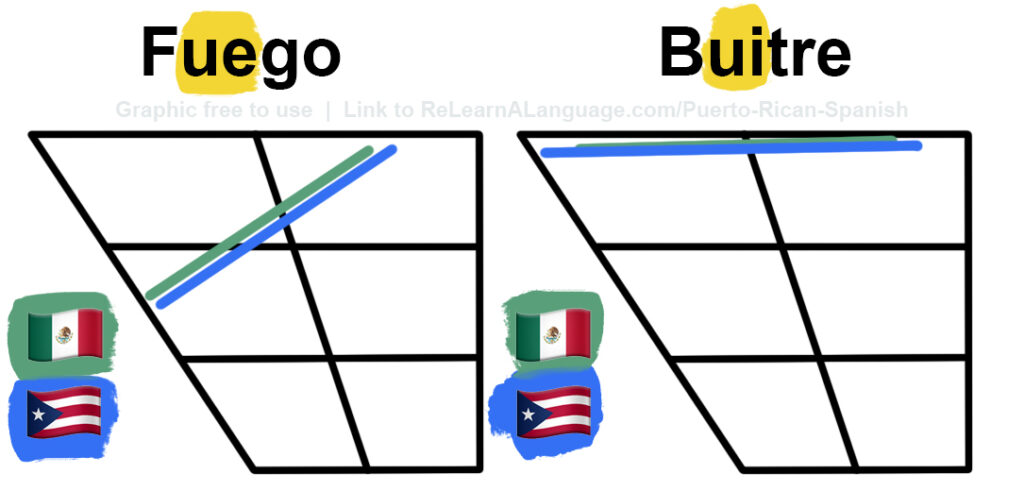
Again: I went through the recording and tested it out with my own mouth, drawing sliding lines from one vowel to another as I went.
And again I found the same thing–my tongue was doing way less work than it was in Mexican Spanish!
(And once again, you can try these out in your own mouth. Now that you understand how the “map” works, say the words slowly and aim your tongue from one vowel space to another.)
But what if we compare that diagram to the same 5 sounds in American English?
Here’s my map overlapped with a General American English Vowel Quadrilateral.
(To be fair to English, we have around 10 additional vowel sounds that aren’t mapped here. If you say the words “cut” or “the” you’ll find a distinct middle sound, a shwa, which Spanish doesn’t come close to.)
But as you can see, it’s not that Puerto Rican Spanish is somehow more “English” or “Spanglish”.
It’s simply it’s own unique accent!
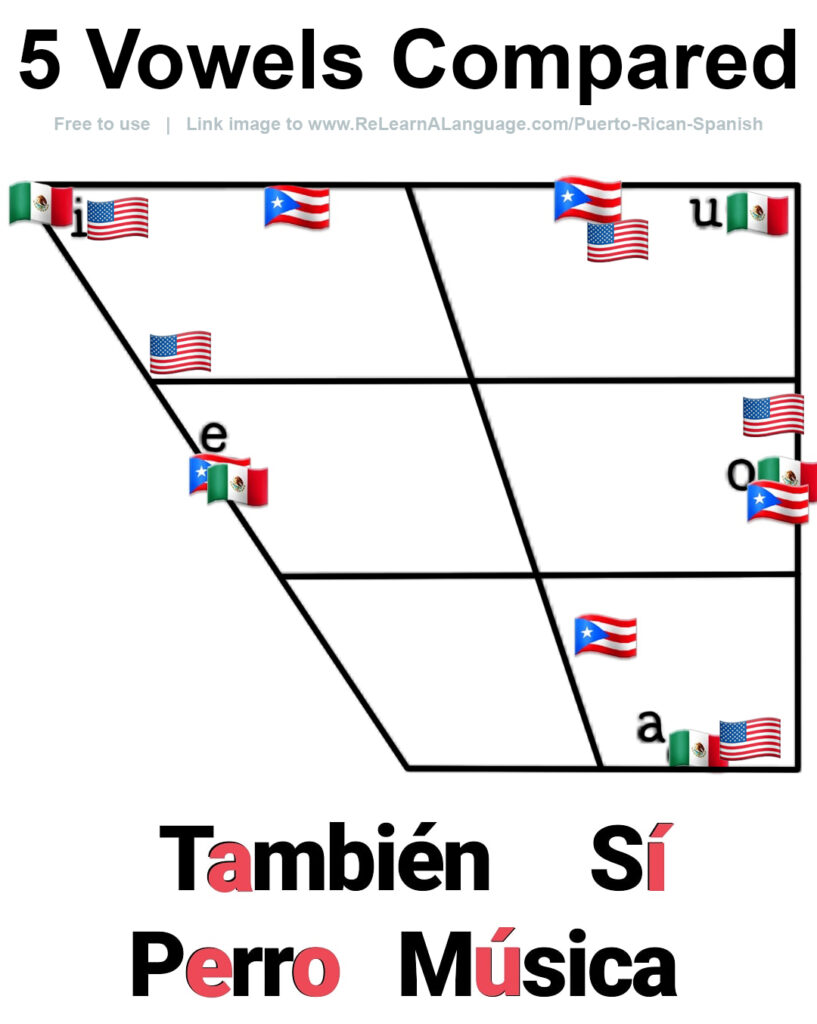
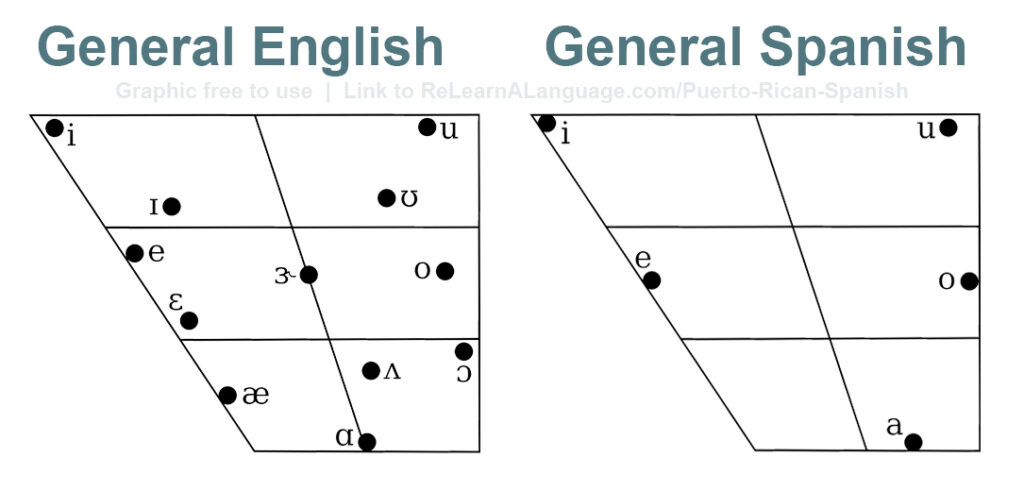
What can we conclude about Puerto Rican vowels?
- If you speak another dialect of Spanish, you might find them much more centered in the mouth. If you try to replicate them, your tongue will probably be working a lot less.
- If you speak English, you’ll have to be work hard to only stick to the 5 Spanish vowels and place them in the right places in your mouth without defaulting to sounds that don’t exist in Spanish at all.
To practice these boricua vowel sounds while you speak, relax your tongue in your mouth while speaking and don’t stress about hitting those cardinal points as much as you would in English or other types of Spanish.
This brings us to our next point….
Consonant Sounds
Now that we know what the tongue is up to when making vowel sounds, we can explore some consonant sounds!
Because of how our mouths make consonants, they’re a bit harder to chart than vowels.
But keeping in mind how relaxed and centered our tongue is in our mouth while making those vowel sounds, we can explore 2 of the most iconic sounds in Puerto Rican Spanish.
Click the video for <5 second clips we can use to demonstrate the sounds we’ll be talking about.
“Mi nombre es Irelis Pérez Cintron”
Right away, we can hear one of the most common sound changes in Puerto Rican Spanish: a softening ending. In the first sentence of this video, we can hear right away that the S or Z sound is aspirated (meaning it’s pronounced similar to the English H as in “house”).
Bienvenidos a Rio de Janeiro en Brazil, probablemente una de las ciudades más hermosas del mundo.
On top of the softening endings in many of these words, you can also hear another characteristic of Puerto Rican Spanish: a contracted D when it appears between two vowels (turning “bienvenidos” into bienveni’o’)
….y hoy, por primera vez, yo voy a mostrar la versión alpha…
And finally, probably the most iconic sound in Puerto Rican Spanish: an R that softens to either an aspirated sound (again, like the English H) or to a L-like sound.
This happens in two places: at the end of words or in between two vowels.
To wrap this section up, I’ll mention that accent isn’t everything.
In theory, if your accent is so good people think you’re a native, you’ll then run into a new problem when people wonder why a native will sometimes make grammar mistakes.
So don’t stress. But if you’re curious like me, you can dig endlessly into things like pitch, speed, and intonation that we haven’t had room to touch on here.
Finding Boricua Teachers & Exchanges
Now I’m not going to lie–finding Puerto Rican Spanish teachers is hard.
Even in an online world saturated with Spanish teachers, finding some from la isla largely depends on luck and persistence.
Here are a few places you can check from time to time. (And my advice is that if you don’t find any now, you try again in a few months.)
The largest online directory of language teachers. Filter first by language (Spanish) then the location (Puerto Rico). Make sure you search for both “professional teachers” and “community tutors”. (Get $10 off your first class here.)
Preply & Verbling
Two additional online directories. They’re smaller than iTalki and harder to search through for something particular, but worth a shot.
r/Puerto Rico & r/Language Exchanges
These Reddit forums are ideal for getting in touch with native speakers for exchanges. However, most internet-using Puerto Ricans also speak fluent English, so it’ll be hard to find someone who is willing to work for trade. (Finding a paid tutor may be easier, although a professional one unlikely.)
Instagram or Facebook
Finally, check hashtags and groups on Instagram and Facebook. There are dozens of #polyglot #languageexchange or #boricua -related groups and hashtags to check out where you might have good luck.
Now if you can only find an inexperienced tutor but still want to work with them, we’ve built two free tools for that.
You can use the below lists of exchange topics to make a conversation with any exchange partner, including untrained tutors, interesting and productive.
To use these menus:
- Decide on a topic for the day
- (If working with an exchange partner, split your time up 30min / 30min between the two languages.)
- Partner 1 asks a question (translating it into Spanish) and then Partner 2 answers it. After Partner 2 has answered it, Partner 1 can respond or also answer it.
- Partner 2 selects the next question (again translating it into Spanish) for Partner 1 to answer, then Partner 2 answers it.
As a bonus type, I suggest correcting each other in the chat (as well as giving the other person new vocabulary) and then writing down the notes you were given or putting them in a flashcard app like Anki.
Now, if online classes or exchanges aren’t for you, we’ll go into where to find real-life immersion in the next section in this article–so keep reading!
Boricua Immersion Resources
Now we’re getting to the fun part.
You’ve probably heard that old myth that “just going there and learning through immersion” is the only or best way to learn a language right?
Well, on top of other reasons that that’s a language myth, I’ve found that the best way to learn through immersion is actually at-home immersion!
So let’s get you set up to start mastering Boricua Spanish the fun way: organically and through culture.
We also have a free immersion mini-course where you can use all of the resources on this page in a fun, productive language learning plan.
Sign up for free, then continue with this article and start exploring your immersion options!
YouTube
Puerto Rican YouTubers (Educational)
- Vegan Puerto Rico (Nutrition & Cooking)
- Taller Boricua/Puerto Rican Workshop Inc. (Fine Arts & History)
- Mochileando (Travel)
- compostapr (farming & ecology)
- Javier Camacho (tech & engineering)
Puerto Rican YouTubers (Entertainment)
- SEÑORITA YANYI (lifestyle vlogger)
- El Tony (men’s lifestyle)
- Rami (lifestyle vlogger)
- DayaVera (lifestyle vlogger)
- COREANO LOCO TV (men’s lifestyle)
- beautybyjaass (beauty)
- Chente Ydrach (comedy)
- tripletapr (animated comedy)
- Kevo Cabanas (Travel)
- VIP3R (gaming)
- Estado Crítico (political satire)
- Yo soy un Gamer (gaming)
Podcasts & Music
Puerto Rican Podcasts (Educational)
- La Brega (cultural)
- En que quedó (journalism features)
- Jay Fonseca (personal/daily editorial)
- Plan de Contingencia (news and politics local to PR)
- Puestos pa’l Problema (editorial news)
- HIghlight This (professional education)
- Torres Gotay Entrevista (long-form interviews with political figures)
Puerto Rican Podcasts (Entertainment)
- Hablando Claro Podcast (comedy)
- Crimepod PR (true crime)
- Geek Lasagna (tech, anime, games, movies, and geek life)
- 84 Historias (talk show)
- Chen Ydrach (comedy)
- Nación Chancleta (political satire)
- The Birra Lounge (craft beer)
- Siempre es Lunes (comedy)
English Language Honorable Mentions
- Spanish con Salsa (language learning podcast which highlights Caribbean Spanish variations)
- TimeStorm (audio drama that teaches kids Puerto Rican history)
- Puerto Rico Foward (35 episodes; an archived documentary about the historic context of Puerto Rico’s current political and economic situation)
Puerto Rican Music
Music is Puerto Rico’s best-known export, and many of these names are going to sound really familiar. But let’s do a round-up to make sure you can build some amazing playlists.
The Ones You’ve Heard of
- 20th Century: Tito Puente
- 2000s: JLo, Mark Anthony, Ricky Martin
- 2010s: Luis Fonsi, Daddy Yankee, Residente, Lin Manuel
- 2020s: Bad Bunny, Osuna
The Ones You Haven’t
- Indie & Rock: Black Guayaba, Webo, Los Walters, Epilogio, Alegria Rampante, Campo-Formio, Doggos, Polbo, Puya, Polem
- Reggae & Ska: PJ Sin Suela, International Dub Ambassadors
- Pop & Electronica: Bascabulla, Fuerte Billete
Books, Short Stories, and Poetry
Interested in diving into Puerto Rican literature? Here are some places to start.
Printed Works
- La amante de Gardel, Mayra Santo Febres
- x/ex/exis (poemas para la nación), Raquel Salas Rivera
- Felices Días, Tío Sergio, Magali Garcia Ramis
- La llamarada, Enrique Laguerre
- Mundo cruel, Luis Negron y Suzanne Jill Levine
- La casa de la laguna, Rosario Ferré
- La Guaracha del Macho Camacho, Luis Rafael Sánchez
Free Digital Works via OpenLibrary.org
- “Cuentos : an anthology of short stories from Puerto Rico” by Wagenheim, Kal. (Bilingual)
- Una isla como tú: historias del barrio para mi familia aquí y en la isla by Cofer, Judith Ortiz.
- Cuentos puertorriqueños compiled by Robert L. Muckley.
Where to find real-life immersion
Head into any Boricua restaurant, bodega, or neighborhood and you’ll find plenty of people to speak Puerto Rican Spanish with.
But if you want something a bit more structured, check out some of these amazing places and resources.
NYC, NJ, CT
- Newyorican poets cafe is the historic poetry cafe for and by Puerto Rican artists in the city.
- NY Public Library has a calendar of Spanish language public events in the 5 boroughs
- El Museu del Barrio is a visual arts museum. and workshop space dedicated to Latino, Caribbean, and Latin American arts which regularly features Borricua-specific programming.
- Puerto Rican Day Parades happen in every city throughout the tri-state area every June. Check out the local Spanish media and Facebook groups to find the one closest to you.
- The NY Latin Culture Magazine keeps an ongoing calendar of events, often sorted by diaspora, including Puerto Rican News and Events.
En La Isla
- Isla Lengua is the only Spanish school on the island for tourists, although it largely caters to locals working on their English. (I don’t have any experience there, but have heard they take a while to get back to emails.)
- AirBNB Experiences can be filtered by language. When you visit Puerto Rico simply browse around for events that are in small groups, one-on-one, or that cater to Spanish-speaking tourists. Let your tour guide know ahead of time that you’re traveling to practice your Spanish, and could they please speak to you in Spanish.
Organize Your Language Immersion
Want to make sure you actually use all of these resources in a systematic way to improve your Spanish? Check out our free immersion mini-course!
To do the immersion course, all you need is 30min and a printer.
By the end of the course, you will:
- organize all the potential immersion resources;
- understand how to use trackers to create a consistent learning habit;
- and build a flexible, year-long plan for living in at-home language immersion!
The course is totally free and you’ll have lifetime access to all of the videos and printed planner (as well as future updates and improvements).
Why give away a whole free course?
Because I want to help heritage language learners like myself connect to their cultures in a way I wish someone had helped me. That simple.
Are you ready to learn Puerto Rican Spanish?
If you’ve made it this far, you now have all of the tools you need to learn Puerto Rican Spanish!
Still not feeling sure about where to start tackling this language learning project?
Here are a few final links that might help you move forward:
- How long does it take to learn a language?
- Watch me relearn my native language
- Spanish novels for learners
Did I miss anything on these lists?
Have any questions?
Let me know in the comments!
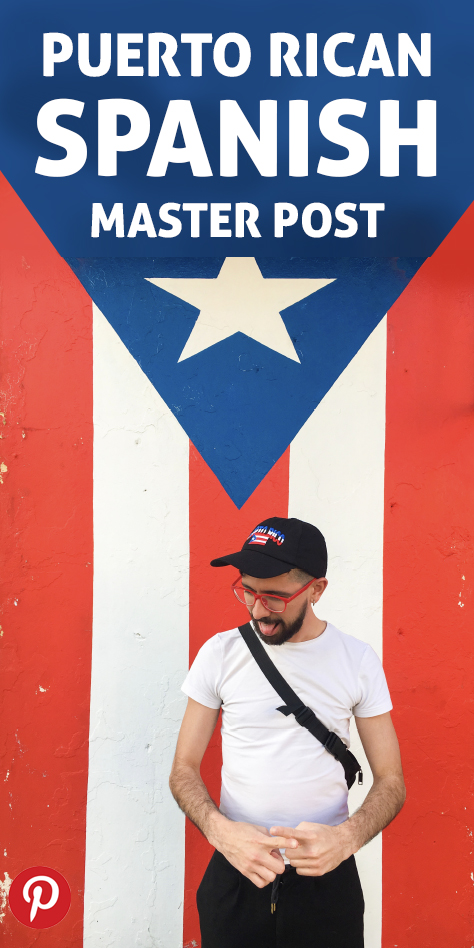
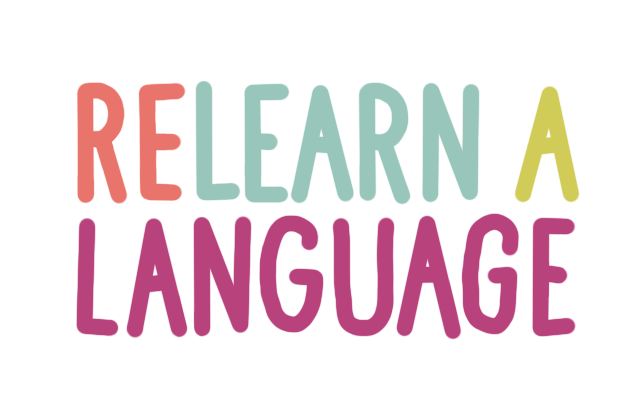
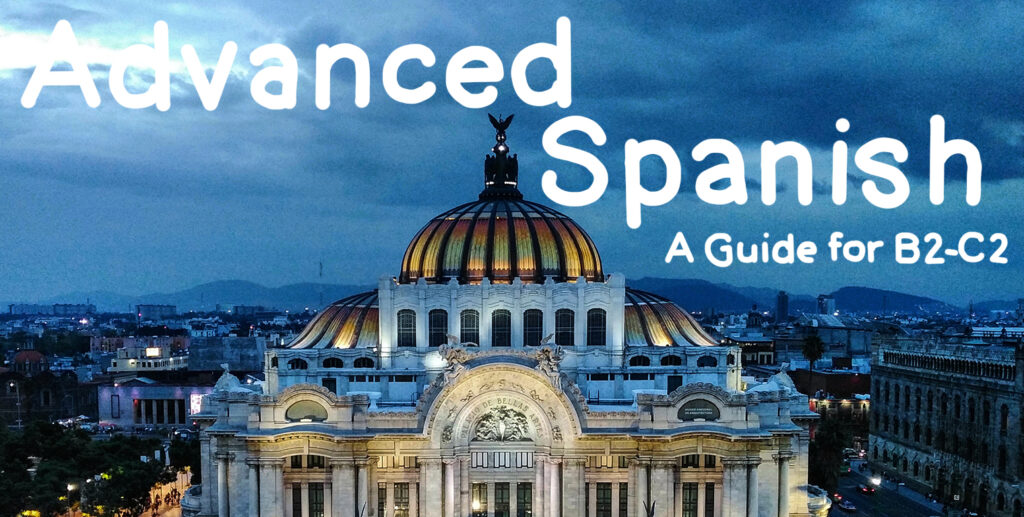
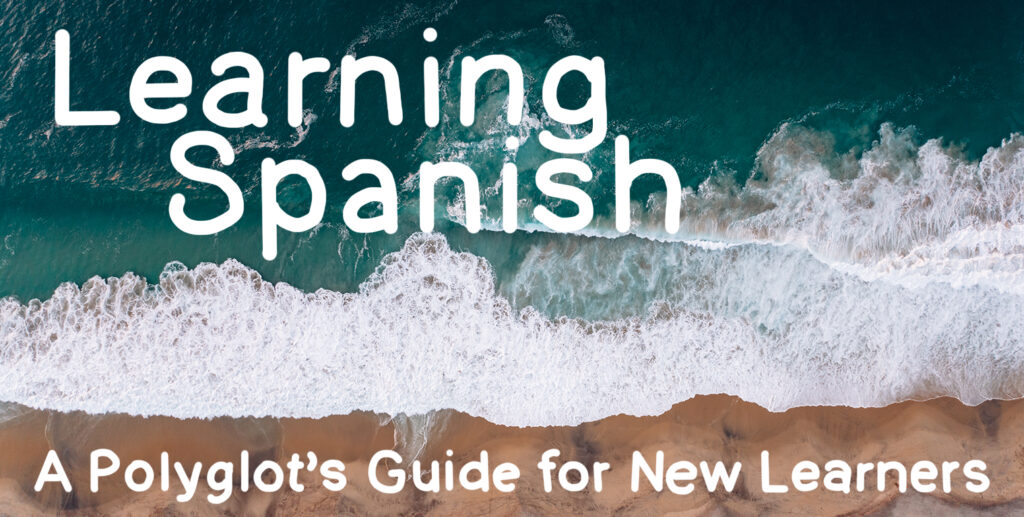
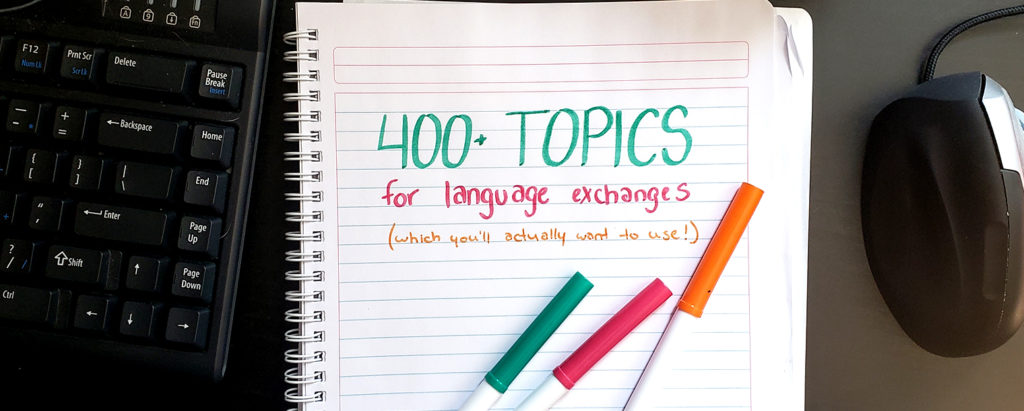

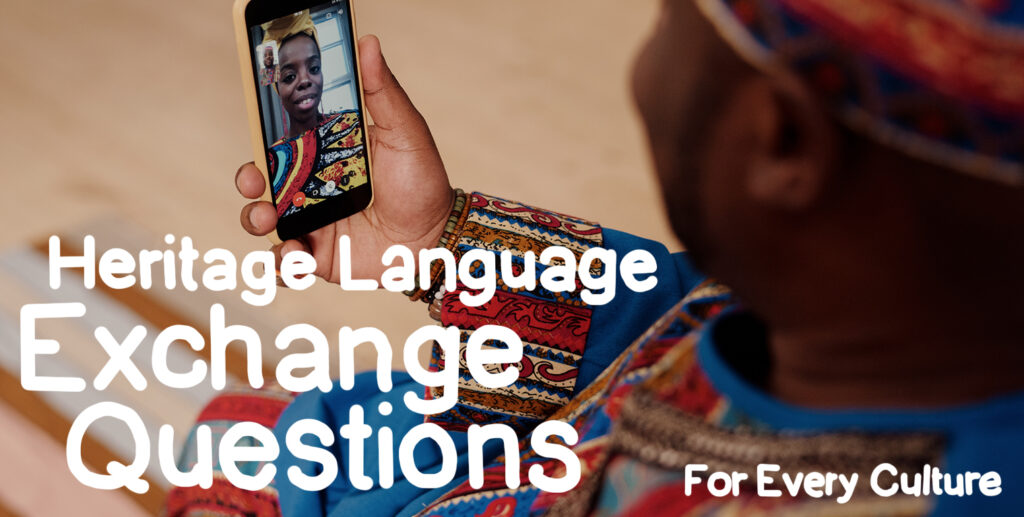
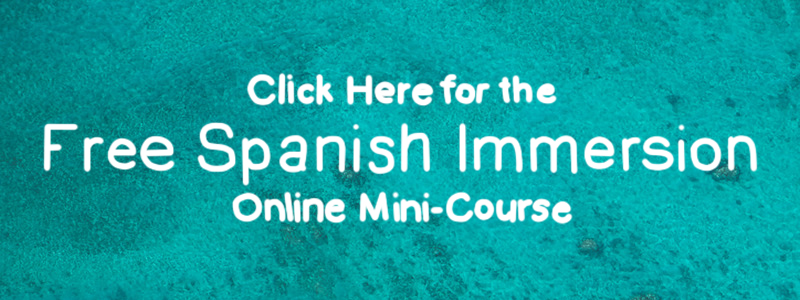
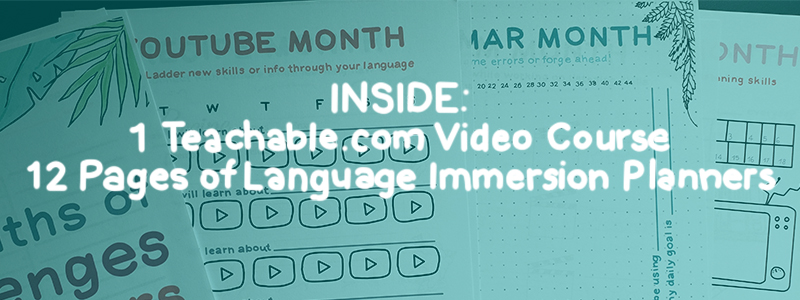
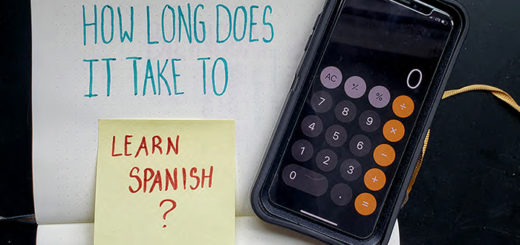
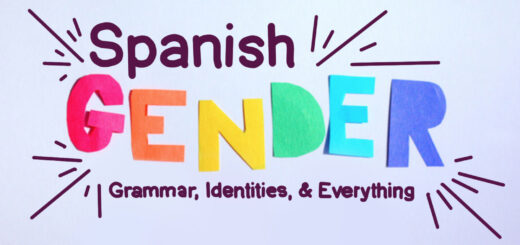
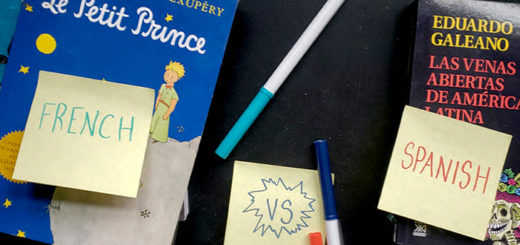

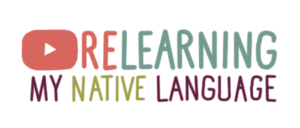
Good Stuff